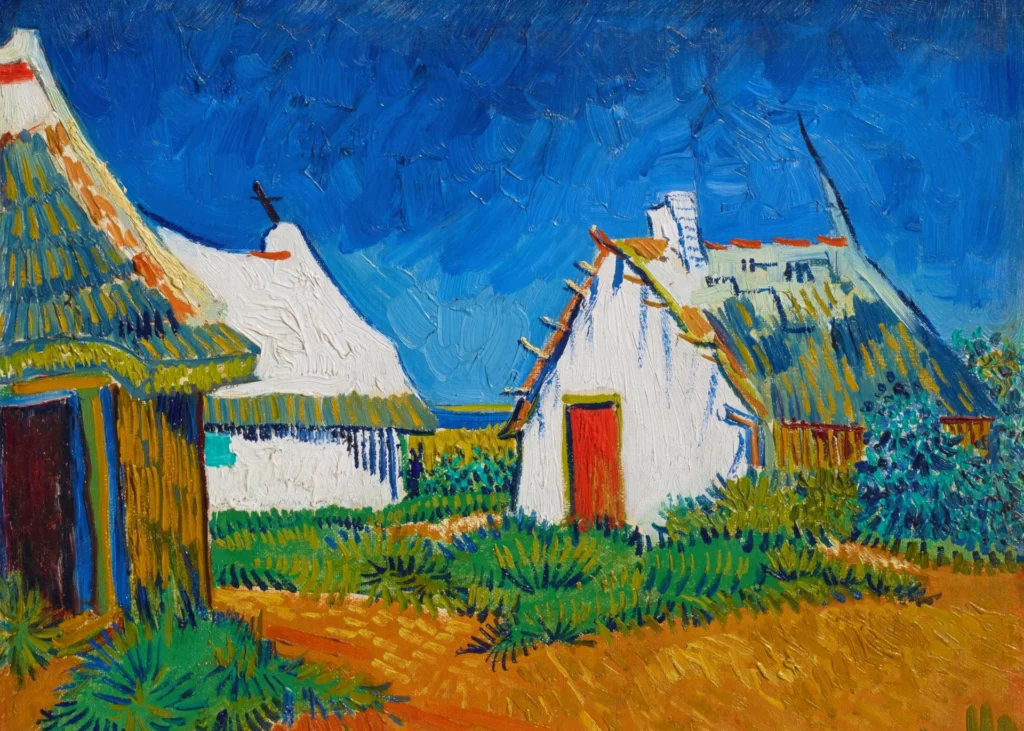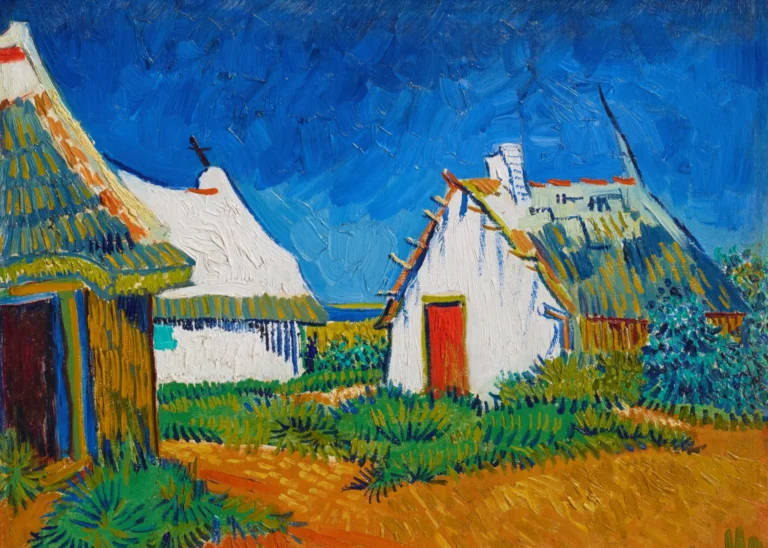Three White Cottages In Saintes-Maries (1888)
Created in June 1888, Vincent van Gogh's 'Three White Cottages in Saintes-Maries' exemplifies his Post-Impressionist style through the depiction of three quaint cottages nestled in the charming village of Saintes-Maries-de-la-Mer. Known for its vibrant colors and dynamic brushwork, the painting reflects Van Gogh's artistic evolution and deep connection to the landscapes of southern France during a poignant time in his life marked by both creativity and emotional struggles.
Year 1888
About the Artwork
The story behind 'Three White Cottages in Saintes-Maries' lies in Van Gogh's stay in Arles, where he immersed himself in the local culture and scenery. This specific artwork emerged during early June 1888, reflecting his radical departure from previous dark-toned artworks. Van Gogh's interaction with the Impressionist movement sparked an exploration of light and color, leading to vibrant representations of everyday life, like this painting. Furthermore, during this time, Van Gogh's relationships, notably with Paul Gauguin, significantly influenced his creativity, paralleling the evolving style evident in this work.
Did You Know
This painting reflects Van Gogh’s deep admiration for the landscapes and everyday life of the south of France, which he often depicted in his works during his stay in Arles.
Having learned from the Impressionist movement in Paris, Van Gogh incorporated brighter colors and unique brush techniques in this work, marking a significant shift in his artistic approach.
Van Gogh’s creative period in Arles was marked by emotional ups and downs, significantly influenced by his tumultuous friendship with Paul Gauguin, which affected his paintings’ themes and expressions.










